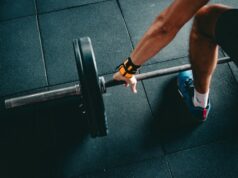People often talk about losing weight when they want to tone their bodies. The real objective, however, ought to be fat loss. Getting your body in shape involves shedding fat from your frame while retaining muscle. But if you are not careful, you might end up losing both fat and muscle.
And what should you do to ensure that you are losing fat and not muscle? Making smart nutrition decisions is key but that on its own is not enough! There are other things that ought to be done, such as resistance training, in order to accomplish this. Below are some effective tips that will help you walk the fine line between losing body fat and retaining muscle.
Increase your protein consumption
One of the key components of losing body fat and not muscle is maintaining a high protein diet. Protein is an important macronutrient in any weight-loss diet. Don’t be scared to increase your consumption. In fact, you ought to be consuming about 1.5 grams of protein per pound of your body weight!
Ingesting sufficient protein that is evenly spread throughout the day helps in protecting your muscle tissues from breaking down. With amino acids floating around in your body, your system senses that it does not need to break down muscle tissue in order to harvest them. In fact, according to several studies, increased protein intake is necessary for maintaining your lean body weight.
What’s more, a protein-rich diet has been shown to have a positive impact on the number of calories that you burn throughout your day. This is manifested as in increase in the number of calories burned through the thermic effect of food, which simply involves the process of how food is digested, absorbed and the nutrients distributed in the body.
Train for muscle gain by lifting weights
High protein intake and a generally healthy diet will certainly help you lose body fat and retain muscle but including strength training to that mix will get you there faster! There’s a high possibility that you will retain more muscles than if you did not do any resistance training.
Incorporate heavy weights into your workout routine. Do not use light weights for many reps as this is not the best recipe for someone looking to gain muscle. Instead, focus on increasing the weights you are using overtime and integrate compound movements like deadlifts, squats, rows, and presses. These particular moves incredibly stimulate your muscles and that is precisely why they should form the foundation of every workout.
You could even include higher-repetition training to your routine. This should, however, be with weights that are challenging to perform 15-20 reps with. A combination of high-rep training alongside heavy strength training is perfect for both losing body fat and retaining or gaining muscle.
And if you do not have the energy and stamina to keep going, you could consider using all natural bodybuilding supplements. They are a great way of boosting your performance in the gym.
Consume healthy fats
A lot of people outrageously reduce their intake of fats in an attempt to lose body fat. As an outcome, they not only lose weight but their hair and once beautiful nails and skin as well. Fats play an important role in maintaining hormone levels and optimal cell structure, both of which are key in supporting muscle building.
Even if you looking to lose weight, do not cut off all fat from your diet. A lean body also requires fat in order to build muscles! Try to consume approximately 0.5 grams of healthy fat per pound of your body weight on a daily basis. Sources of healthy fats include avocado, walnuts, hemp oil, olive oil, coconut oil, salmon, and sardines.
Reduce your carb intake
You’ve got to reduce your carb intake; but not completely. Reduce it up to a point whereby it is efficiently used in the body. A lot of people have a problem dealing with this and that is why obesity is becoming common.
Most of your carbs ought to be consumed at times when they benefit you most; that is about two hours prior to your workout and just after your workout is over. The rest of your carbs should come from fibre-rich vegetables. Aim for about 1.5 grams of carbohydrates per pound of your body weight.
Practice cardio
Incorporating cardio into your workouts will accelerate the fat-loss process. However, many people tend to think that engaging in long cardio-sessions is better. Yes, this will burn a lot of calories but the overall effect won’t be pleasant. Your body will end up in a caloric deficit state whereby it starts to preferentially burn muscle over body fat. And remember, rapid loss of fat could contribute to a significant loss of muscle.
To avoid this, practice high-intensity interval training (HIIT) as your main form of cardio. It has been proven to preserve muscle and uses fat as fuel. Start off your session with a three to five-minute warm-up and then engage in your first interval for sixty seconds. Next, back off and let your heart rate return to normal, which takes about two to four minutes then repeat again.
And given that HIIT is quite taxing for your body, do not attempt to do it on a daily basis. You could have one to three sessions every week.
In conclusion
Losing body fat whilst retaining muscle is not an easy journey! The above tips will, however, help you get your desired results. But always keep in mind that your transformation will not happen overnight; changing your body will take time. Apart from maintaining consistency in your diet and strength training, exercise patience.
Also, some people might see results sooner than others because of other factors such as genetics and lifestyle among others. So if you feel as if you are not making any progress, consider working with a personal trainer and a nutritionist to come up with a customized plan that works for you.











